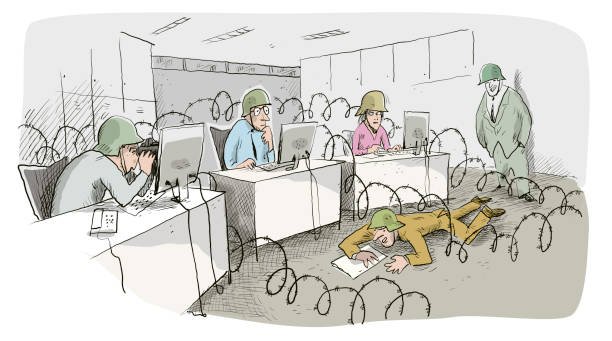On this page, we evaluate the impact of peer pressure, as a social factor, on the ability of a grade 12 learner to do their school activities.
Peer pressure is a powerful social force that can significantly influence the behavior, decisions, and overall direction of Grade 12 learners. As these students stand on the precipice of adulthood, the sway of their peers can play a pivotal role in shaping their approach to education and their commitment to school activities.
The impact of peer pressure, as a social factor, on the ability of a grade 12 learner to do their school activities
Let’s evaluate how peer pressure can both hamper and accelerate the attainment of educational goals for a Grade 12 learner.
Peer pressure significantly affects Grade 12 learners’ engagement with school activities, acting as both a motivator and a deterrent:
- Positively, it can inspire students to improve their study habits and academic performance.
- Negatively, it can lead to distractions and poor decisions that detract from educational goals.
| Impact of Peer Pressure | Positive Effects | Negative Effects |
|---|---|---|
| Academic Performance | Motivates improved study habits and achievements. | Leads to distractions and decreased performance. |
| Engagement with School Activities | Encourages participation in extracurricular activities. | Causes neglect of academic responsibilities. |
| Social Interactions | Promotes a supportive peer network for academic success. | Pressures into behaviors that harm educational goals. |
This table encapsulates how peer pressure can both positively and negatively influence a Grade 12 learner’s academic journey and social experiences within the school environment.
The impact depends on the nature of the peer influence and the learner’s ability to balance social pressures with academic commitments.
Acceleration of Educational Goals
Positive Influence and Motivation: Peer pressure is not inherently negative. When surrounded by motivated, goal-oriented peers, a Grade 12 learner can be inspired to adopt a more disciplined approach to their studies. The desire to match the achievements of their peers can serve as a powerful motivator, pushing them to engage more deeply with school activities, strive for higher grades, and participate in extracurriculars that enrich their educational experience.
Example: A student might see their friends dedicating time to study for the SATs or engaging in academic clubs and decide to join in, realizing the benefits these activities could have on their college applications.
Collaborative Learning Environments: Positive peer pressure can encourage learners to form study groups, share resources, and support each other’s learning processes. This collaborative environment fosters a sense of community and mutual achievement, making the educational journey more engaging and less daunting.
Example: A learner who is usually reluctant to participate in group study sessions might be persuaded by friends to give it a try, discovering that they benefit from the shared knowledge and diverse study methods.
Hampering of Educational Goals
Distraction and Misplaced Priorities: On the flip side, peer pressure can lead learners astray, tempting them to prioritize socializing or engaging in non-academic activities at the expense of their studies. The desire to fit in or to be perceived as “cool” can overshadow the importance of academic responsibilities, leading to procrastination, decreased academic performance, and a lack of preparation for important milestones like exams or college entrance.
Example: A student might skip study sessions or neglect assignments to hang out with friends who place little value on academic achievement, jeopardizing their grades and future prospects.
Increased Stress and Anxiety: The pressure to conform to the expectations or behaviors of peers can also contribute to heightened stress and anxiety. This is particularly true for learners who feel compelled to engage in activities they’re uncomfortable with or to maintain a facade of indifference towards their studies, fearing judgment or exclusion.
Example: A learner might feel pressured to downplay their academic ambitions or to participate in risky behaviors to gain acceptance, leading to internal conflict and anxiety about their choices.
Navigating Peer Pressure
For Grade 12 learners, navigating peer pressure requires a delicate balance between social integration and personal goals. Developing a strong sense of self, setting clear priorities, and choosing friends who respect and support one’s academic ambitions can help mitigate the negative aspects of peer pressure while enhancing its positive influences. Teachers and parents also play a crucial role in guiding learners to understand the value of choosing peers who positively influence their educational journey.
Peer pressure in Grade 12 serves as a double-edged sword that can either propel students towards their educational objectives or divert them from their path. The impact of peer pressure largely depends on the nature of the peer group and the individual’s capacity to maintain their focus on long-term goals amidst the social dynamics of high school life.
Below is some optional content gathered from online sources. NB, please consult approved and prescribed learning content at your school at all times:
- How Grade 12 Learners Could Use Communication to Study Effectively
- The impact of peer pressure, as a social factor, on the ability of a grade 12 learner to do their school activities
- How the inability to effectively manage intrapersonal conflict could affect your relationship with your peers, as a grade 12 learner
- How Grade 12 Learners Could Use Positive Relationships to Enhance Effective Communication among Learners at the School
- The value of the ability to accommodate others’ views when completing assessment projects
- How personality types negatively impact communication between grade 12 learners when they work on group assignments
- The educational benefits of communicating your feelings about challenges in your school work with teachers
- Differentiating between effective communication and ineffective communication when grade 12 learners are taught
- FOUR reasons why positive relationships between grade 12 learners is important when they engage on assessment tasks
- Initiating positive relationships for collaboration in schoolwork

